| active optics |
|
Prior to the 1990s, the primary mirrors of the world's largest telescopes had thicknesses of approximately 15% of their diameters. This ensured that the mirror was rigid and kept its shape regardless of the orientation on the sky. Unfortunately, this resulted in extremely heavy mirrors - the 4.2 m mirror of the William Herschel Telescope (WHT) on La Palma, for example, has a thickness of 56 cm and a weight of 16.5 tonnes (see figure 59). To make the next generation of 8 m class telescopes, thinner mirrors had to be used, as otherwise they, and their mounts, would have become impossibly heavy to move accurately around the sky. So, for example, if the 8.2 m primary mirror of the Very Large Telescope (VLT) in Chile had been constructed as a traditional thick mirror, it would have had a thickness of over 1 m and weighed approximately 100 tonnes. In contrast, the thin mirror that was actually built for the VLT has a thickness of only 0.18 m (i.e. 2% of the diameter) and weighs only 24 tonnes (see figure 59).
| figure 59: |
Thick and thin
mirrors. Left: photograph
of the 4.2 m primary mirror of the WHT, which has a thickness/diameter
ratio of 13%. Right: photograph
of the 8.1 m primary mirror of the Gemini North telescope, which has a
thickness/diameter ratio of only 2%.
|
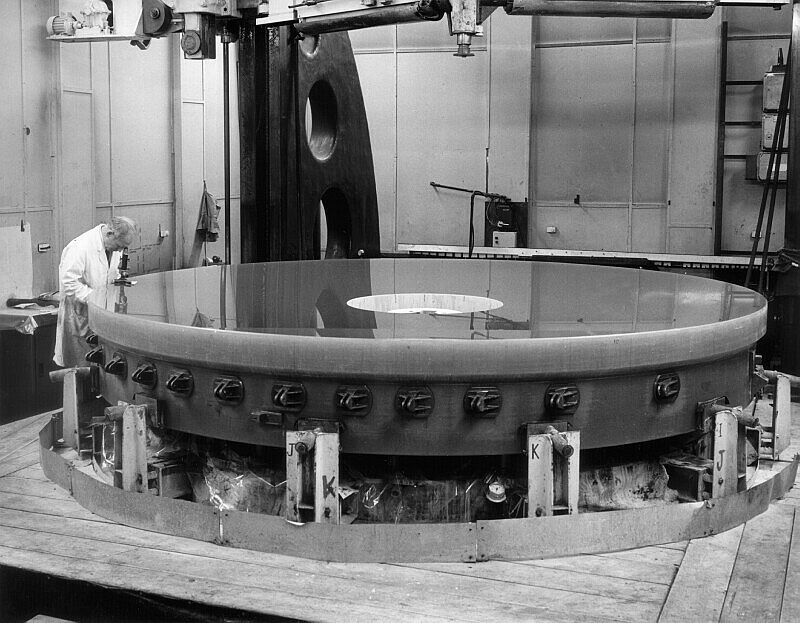
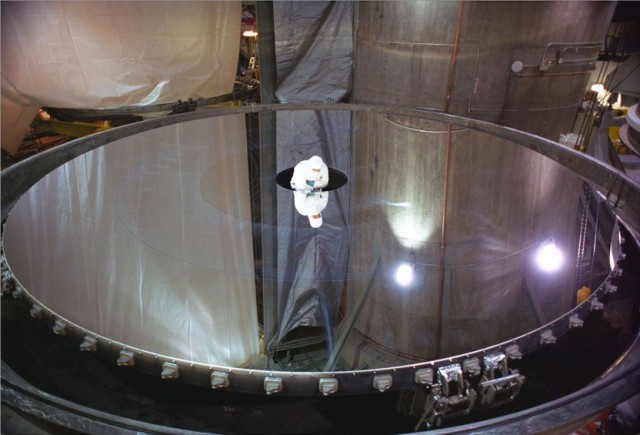
The trouble with using thinner mirrors is that they are distorted from their ideal shape by gravity as they are tilted to view different regions of the sky. To combat this, a technique known as active optics was developed, where the thin (and hence flexible) mirror is mounted on a set of actuators, which are devices that transform an electrical signal into linear motion. The system works as follows (see figure 60): whilst the telescope is observing a science target, the light from a bright reference star somewhere in the field of view around the science target is picked off and the quality of its image is measured. This measurement is usually performed by a wavefront sensor, which we shall discuss in more detail later. A computer-controlled set of actuators is then used to push and pull different parts of the primary mirror so that its shape changes in such a way as to improve the quality of the reference star image. Only about one measurement and correction cycle per minute is required, as the orientation of the telescope whilst tracking a target does not change significantly on timescales shorter than this. Note that, as well as correcting the shape of the primary mirror, many active optics systems also correct for the change in the position of the secondary mirror (see figure 60). This corrects for flexure and temperature-dependent changes in the length of the Serrurier truss, further improving the image quality.
| figure 60: |
Left:
schematic showing
the components of a typical active optics system. Note the actuators (shown
as green springs) controlling the primary mirror shape and the vertical and
horizontal position of the secondary mirror. Right:
photograph of the
VLT primary mirror support, showing 150 actuators arranged in six concentric
rings.
|
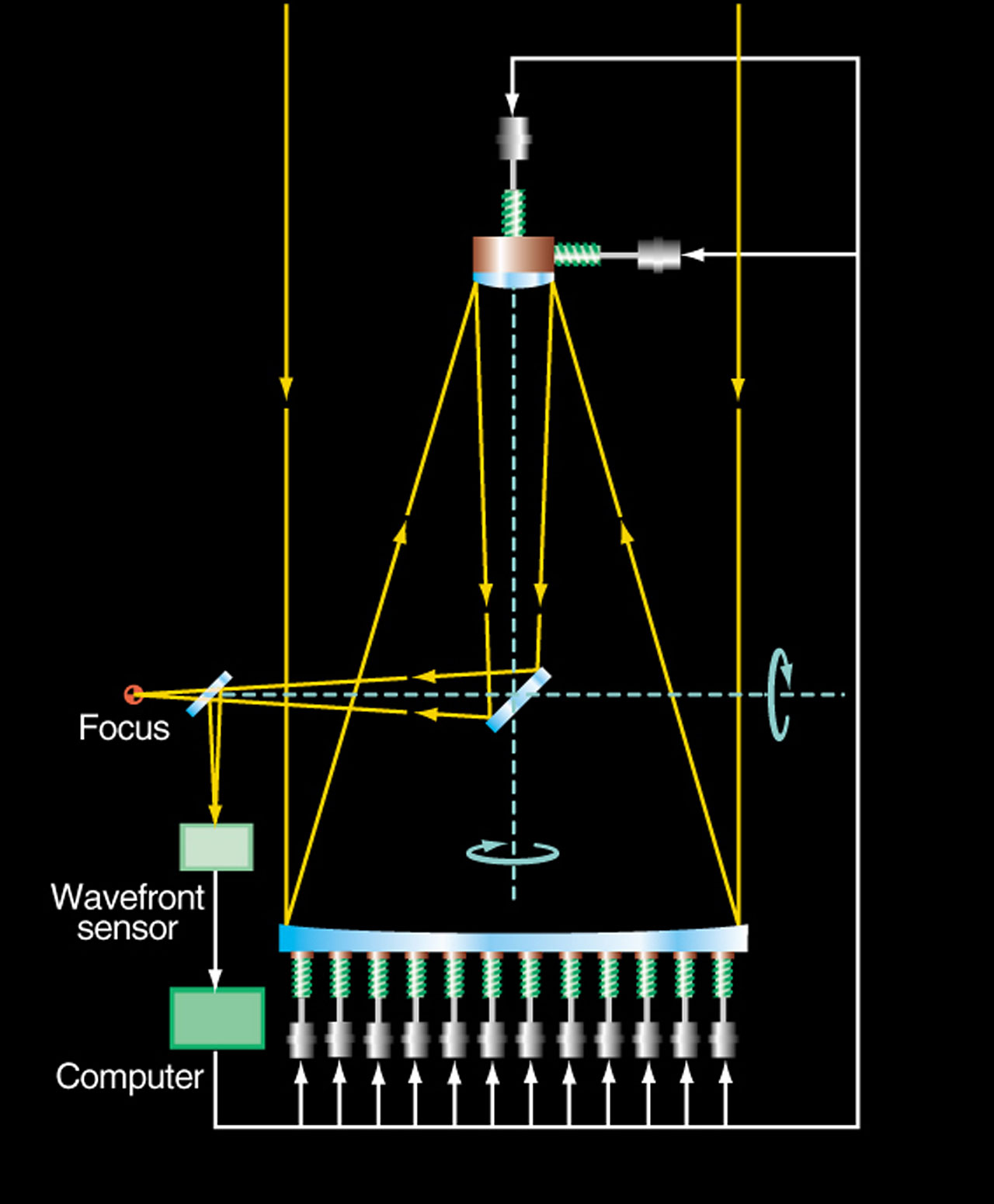
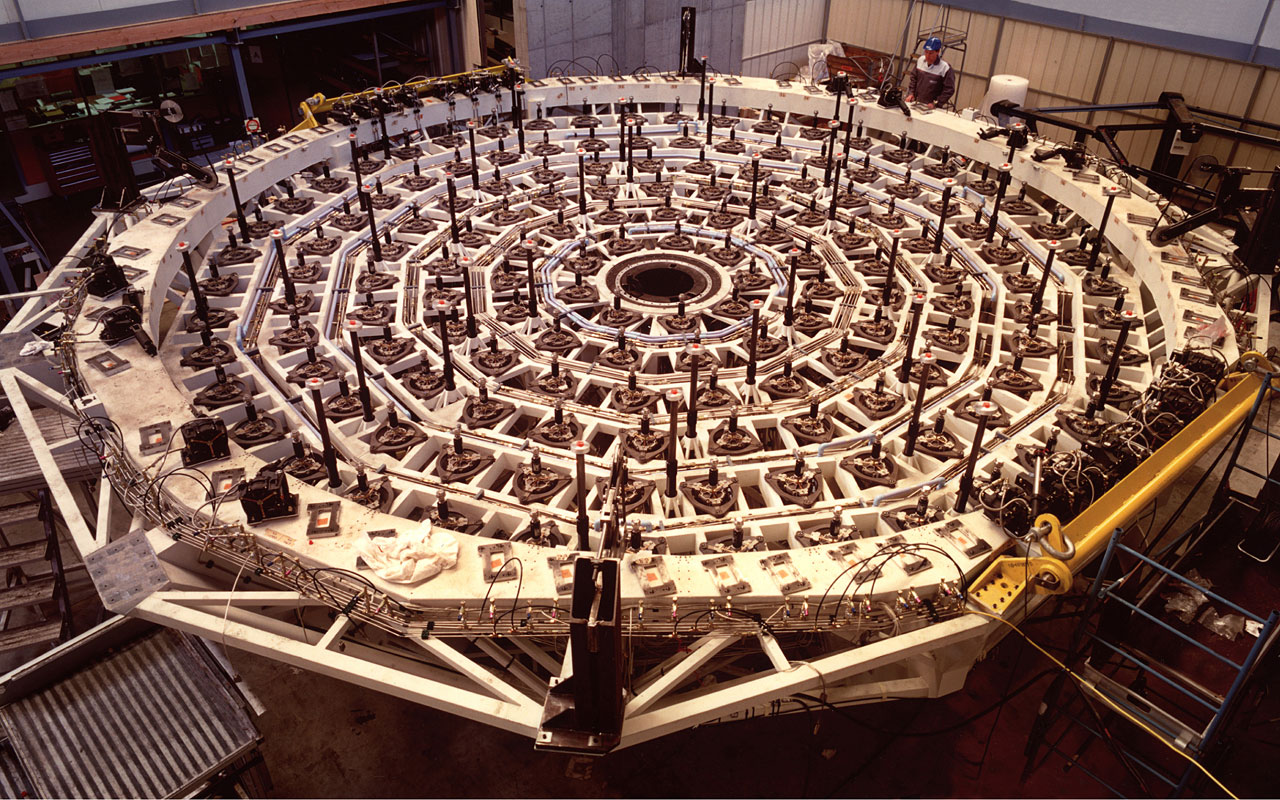
An alternative, cheaper solution to single (so-called monolothic) mirrors is to use segmented mirrors. This approach has been adopted, for example, on the twin 10 m Keck telescopes (figure 61). The segments are typically hexagonal in shape and usually have an asymmetric profile so that when all of the segments are combined they form, for example, a hyperbolic shape. Active optics systems are essential for segmented-mirror telescopes, as the position of each segment needs to be carefully controlled so that the overall shape of the primary mirror is retained as it is tilted to different sky positions. Each segment is therefore mounted on its own set of actuators, as shown in (figure 61).
| figure 61: |
Left:
photograph
showing the segmented primary mirror of one of the twin 10 m Keck
telescopes on Hawaii, composed of 36 hexagonal mirror segments, each
1.8 m wide, 8 cm thick and weighing only 400 kg. Note the reflection of
the person for scale. Right:
photograph showing the actuators beneath the hexagonal mirror segments
of the 10.4 m Gran Telescopio Canarias on La Palma.
|
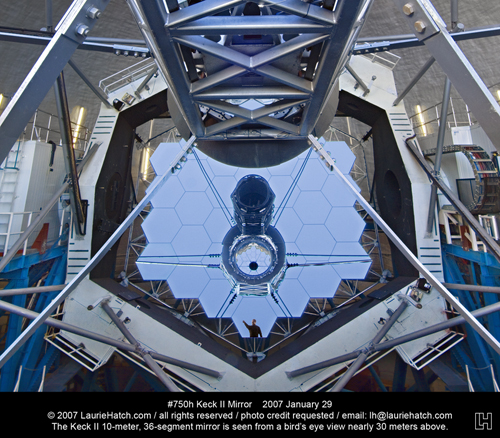
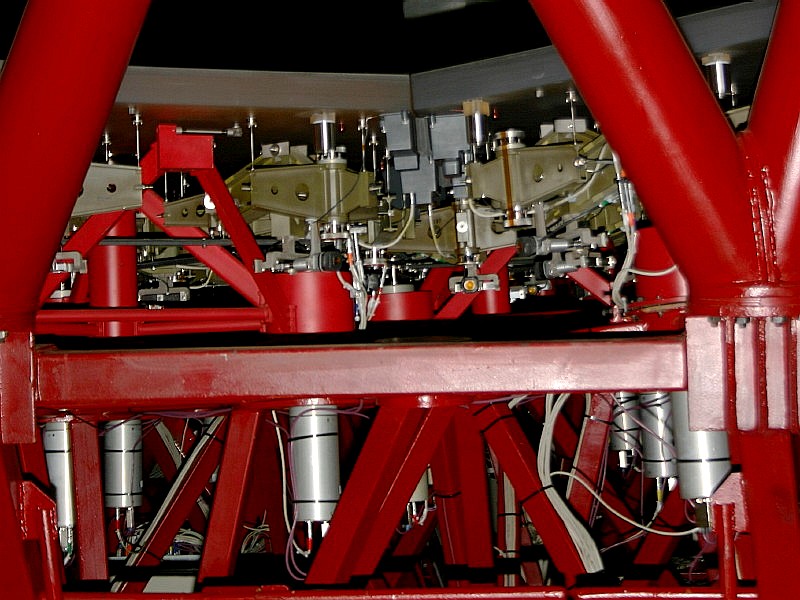
Segmented mirrors are the only feasible way of constructing telescopes with apertures significantly in excess of 8 m, as monolithic mirrors would become extremely expensive and ultimately impossible to manufacture, transport, install and maintain. The disadvantage of segmented mirrors is that they often require asymmetric profiles, making them difficult to manufacture. The active optics systems required to support them is also complex, and the gaps between the segments (typically a few mm) can cause low-level diffraction effects and increased infrared background in the final image.